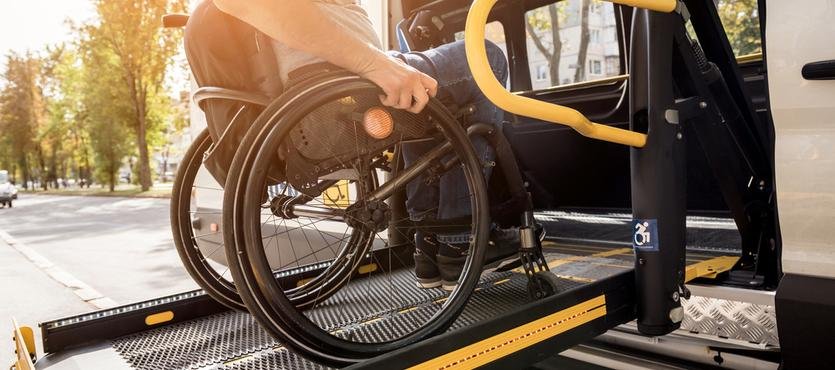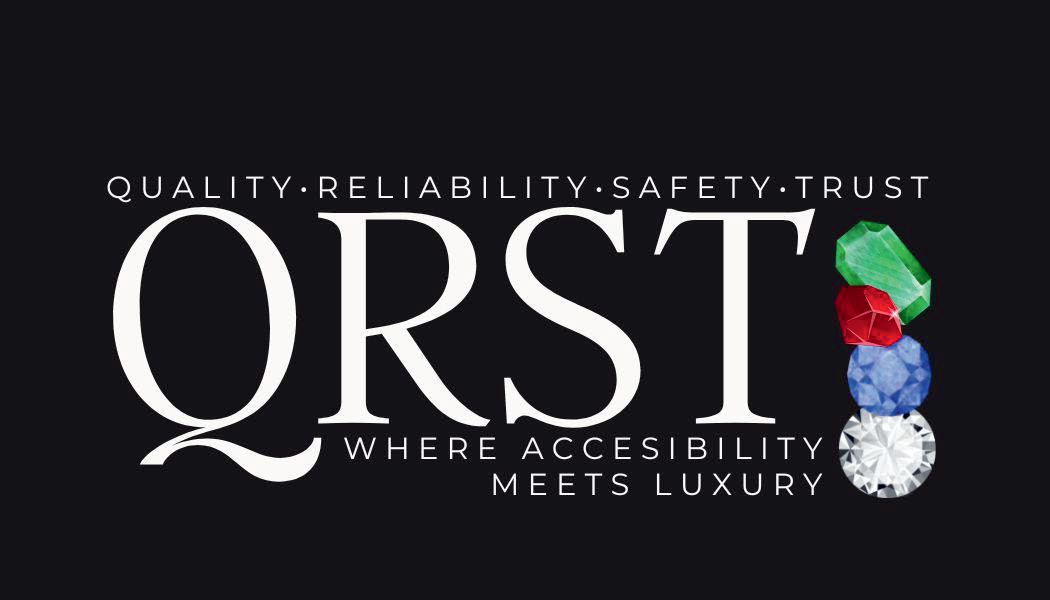In the pursuit of an inclusive and equitable education system, it is imperative to address the unique challenges faced by wheelchair-using students in Virginia. One crucial aspect often overlooked is transportation, a fundamental element that can significantly impact a student’s ability to access education. As QRTS Wheelchair Transportation helps you enter into the intricate web of considerations surrounding transportation for students with mobility challenges, we uncover the hurdles they face and explore potential solutions. This blog aims to shed light on the transportation landscape in Virginia and advocate for measures that ensure every student, regardless of mobility, can navigate the path to knowledge seamlessly.
Understanding the Landscape:
Virginia, like many other states, grapples with creating an inclusive environment for students with disabilities. While progress has been made, transportation remains a stumbling block for many wheelchair users. Public transportation systems, school buses, and even private transportation services often fall short in accommodating the specific needs of students with mobility challenges.
Public Transportation Accessibility:
Public transportation serves as a lifeline for many students, connecting them to educational institutions and opportunities beyond. However, the accessibility of public transportation is not uniform across the state. Wheelchair-using students may encounter barriers such as inaccessible bus stops, lack of wheelchair ramps, and limited seating space. The absence of clear guidelines and enforcement mechanisms exacerbates these issues.

Addressing this challenge requires collaboration between transportation authorities and disability advocacy groups. Initiatives to retrofit existing buses with wheelchair ramps, ensure accessibility at bus stops, and provide comprehensive training for transportation staff are crucial steps toward creating a more inclusive public transportation system.
Challenges with School Buses:
School buses, a primary mode of transportation for students, often struggle to meet the needs of wheelchair users. The design of traditional school buses poses challenges in boarding and securing wheelchairs. Moreover, the time-consuming process of securing wheelchairs can lead to delays, impacting both the student in question and other passengers.
In response to these challenges, some school districts have adopted accessible buses equipped with ramps or lifts. Disability right in DMV play a crucial role in advocating for accessibility, just as it can in Virginia. However, the widespread implementation of such measures is yet to be achieved. Policymakers and education officials must prioritize the adoption of accessible buses, considering factors such as cost, training for bus drivers, and infrastructure improvements at schools to facilitate smooth boarding and disembarking.
Private Transportation Services:
In some cases, students with disabilities may rely on private transportation services. Whether contracted by school districts or arranged independently, these services must be attuned to the specific needs of wheelchair users. This involves not only having wheelchair-accessible vehicles but also ensuring that drivers are trained to assist students in boarding and alighting safely.
Creating a standardized framework for private transportation providers, including certification processes and ongoing training, can contribute to a more inclusive and reliable network. Collaboration between school districts and private transportation services is paramount to establishing a cohesive and well-coordinated system that prioritizes the safety and comfort of all students.
Legal Landscape:
Understanding the legal landscape is crucial for advocating change. Federal laws, such as the Americans with Disabilities Act (ADA) and the Individuals with Disabilities Education Act (IDEA), mandate equal opportunities for students with disabilities, including accessible transportation. However, the implementation and enforcement of these laws at the state and local levels vary.
Advocacy groups, parents, and educators must work collaboratively to ensure that these laws are not just on paper but are translated into practical, on-the-ground solutions. Engaging with policymakers and pushing for legislation that explicitly addresses transportation barriers for wheelchair-using students can be a catalyst for positive change.
Potential Solutions and Best Practices:
In addressing the multifaceted challenges surrounding transportation for wheelchair-using students in Virginia, it is imperative to illuminate a path forward. The complexities of this issue necessitate a nuanced approach, one that goes beyond merely identifying problems to actively proposing solutions. In this section, we explore potential solutions and best practices that can serve as beacons of inclusivity in the transportation landscape. From collaborative partnerships and technological integrations to comprehensive training programs and infrastructure upgrades, these initiatives form a tapestry of actionable strategies aimed at ensuring equitable access to education for all students, regardless of their mobility challenges. Reading about the future trends in wheelchair accessible transportation in Washington D.C may help expand your vision on this topic. As we delve into these potential solutions, the overarching goal is not just to envisage change but to lay the groundwork for a future where transportation becomes a seamless conduit for every student’s journey toward knowledge and personal growth.
Collaborative Partnerships:
Effective solutions often arise from collaborative efforts. Schools, transportation authorities, advocacy groups, and parents must join forces to identify and address transportation challenges. Establishing task forces or committees dedicated to improving transportation for students with disabilities can foster dialogue and drive tangible changes.
Technology Integration:
In the digital age, technology can play a pivotal role in enhancing transportation accessibility. Apps that provide real-time information on accessible routes, available seating, and any potential disruptions can empower wheelchair users and their caregivers. Additionally, leveraging technology for communication between parents, schools, and transportation providers can streamline coordination and address issues promptly.
Training Programs:
Education and training are cornerstones of creating an inclusive transportation system. Comprehensive training programs for bus drivers, transportation staff, and even fellow students can bridge the knowledge gap and foster a supportive environment. Training should encompass not only the technical aspects of operating accessible vehicles but also include sensitivity training to promote empathy and understanding.
Infrastructure Upgrades:
Investing in infrastructure upgrades is essential for creating a universally accessible transportation system. This includes retrofitting buses with ramps or lifts, ensuring wheelchair-friendly bus stops, and making schools accessible for all students. While initial costs may pose a challenge, the long-term benefits in terms of inclusivity and community well-being far outweigh the financial considerations.
Policy Advocacy:
Advocacy at the policy level is instrumental in driving systemic change. Parents, educators, and advocacy groups should actively engage with policymakers, presenting data, personal stories, and best practices from other regions to make a compelling case for inclusive transportation policies. Grassroots movements can amplify these efforts, putting pressure on decision-makers to prioritize accessibility in transportation planning.
Community Engagement and Awareness Campaigns:
Creating a community that understands and supports the needs of wheelchair-using students is crucial. Conducting awareness campaigns within local communities, schools, and transportation hubs can foster empathy and encourage proactive involvement. These campaigns can include informational sessions, workshops, and outreach programs that not only educate the public about the challenges faced by students with mobility issues but also promote a culture of inclusivity.
Flexible Scheduling and Transportation Options:
Recognizing the diverse schedules and needs of students, implementing flexible transportation scheduling can provide tailored solutions. This may involve staggered school start times, especially for students with mobility challenges who may require additional time for boarding and disembarking. Having a look at the mobility solutions for children with disabilities in BMV may help you get an idea of what can be done in Virginia, Additionally, exploring alternative transportation options, such as on-demand accessible transportation services, can offer personalized solutions based on individual students’ requirements.
Peer Mentorship Programs:
Establishing peer mentorship programs within schools can create a supportive environment for wheelchair-using students. Older students with similar experiences can guide and assist younger peers, both in navigating transportation challenges and adapting to the school environment. These programs not only offer practical assistance but also foster a sense of community and camaraderie, reducing potential feelings of isolation among students with mobility challenges.
Regular Accessibility Audits and Maintenance Protocols:
Ensuring the ongoing accessibility of transportation infrastructure requires regular audits and maintenance protocols. Transportation authorities should conduct systematic accessibility audits of buses, bus stops, and other facilities, promptly addressing any issues identified. Implementing preventive maintenance measures can contribute to the sustained functionality of wheelchair lifts, ramps, and other accessibility features, minimizing downtime and disruptions.
Financial Support and Grants for Accessibility Upgrades:
Recognizing the financial constraints faced by schools and transportation agencies, providing financial support and grants specifically designated for accessibility upgrades is essential. State and federal authorities can collaborate to establish funding programs that incentivize the adoption of accessible transportation solutions. These initiatives can encompass grants for retrofitting buses, enhancing bus stops, and implementing technological advancements to improve the overall accessibility infrastructure.
Inclusive Curriculum and Sensitivity Training:
Incorporating inclusive curriculum content that educates students about diversity, including disabilities, can foster an environment of understanding and acceptance. Additionally, integrating sensitivity training into the curriculum for both students and staff can enhance awareness and promote respectful interactions. This holistic approach contributes to the creation of a school culture where differences are celebrated, reducing the likelihood of stigmatization or discrimination against wheelchair-using students.

Research and Development Initiatives:
Encouraging research and development initiatives focused on improving transportation for students with mobility challenges can lead to innovative solutions. Collaborative efforts between educational institutions, transportation agencies, and technology developers can yield breakthroughs in accessible transportation design, making future systems more efficient, cost-effective, and accommodating of diverse needs.
Conclusion:
Transportation considerations for wheelchair-using students in Virginia are a critical aspect of ensuring equal access to education. As we navigate the complex terrain of public transportation, school buses, and private transportation services, it is evident that a concerted effort is needed to dismantle the barriers that hinder inclusivity.
By fostering collaboration, embracing technology, investing in training, upgrading infrastructure, and advocating for policy changes, we can pave the way for a transportation system that caters to the diverse needs of all students. The journey toward inclusivity begins with acknowledging the challenges faced by wheelchair users and collectively working toward solutions that empower every student to pursue education without hindrance. Through such concerted efforts, we can truly create a future where no student is left behind on the road to knowledge.
FAQ’s
How do you accommodate a student in a wheelchair?
Accommodating a student in a wheelchair involves providing wheelchair-accessible facilities, such as ramps and elevators, and ensuring inclusive classroom seating arrangements. Additionally, offering support services and considering individual needs contribute to creating an inclusive learning environment.
How do you transport a wheelchair bound person?
Transporting a wheelchair-bound person involves using wheelchair-accessible vehicles equipped with ramps or lifts. Securely anchoring the wheelchair within the vehicle ensures safe and comfortable transportation.
How do wheelchair users get on buses?
Wheelchair users board buses using ramps or lifts, ensuring accessibility. Once on board, securement systems stabilize the wheelchair during transit, ensuring a safe and inclusive public transportation experience.
How are accommodations used to support students?
Accommodations support students by providing tailored adjustments, like extended testing time or accessible materials, to meet their individual needs. These measures aim to create an inclusive learning environment, ensuring every student has equal opportunities for success.
What is the first thing that you should do when transporting a person in a wheelchair?
Firstly, ensure the wheelchair user’s consent and communicate effectively about the boarding process. Subsequently, activate and secure the vehicle’s wheelchair-accessibility features, such as ramps or lifts, for a safe and dignified entry.
